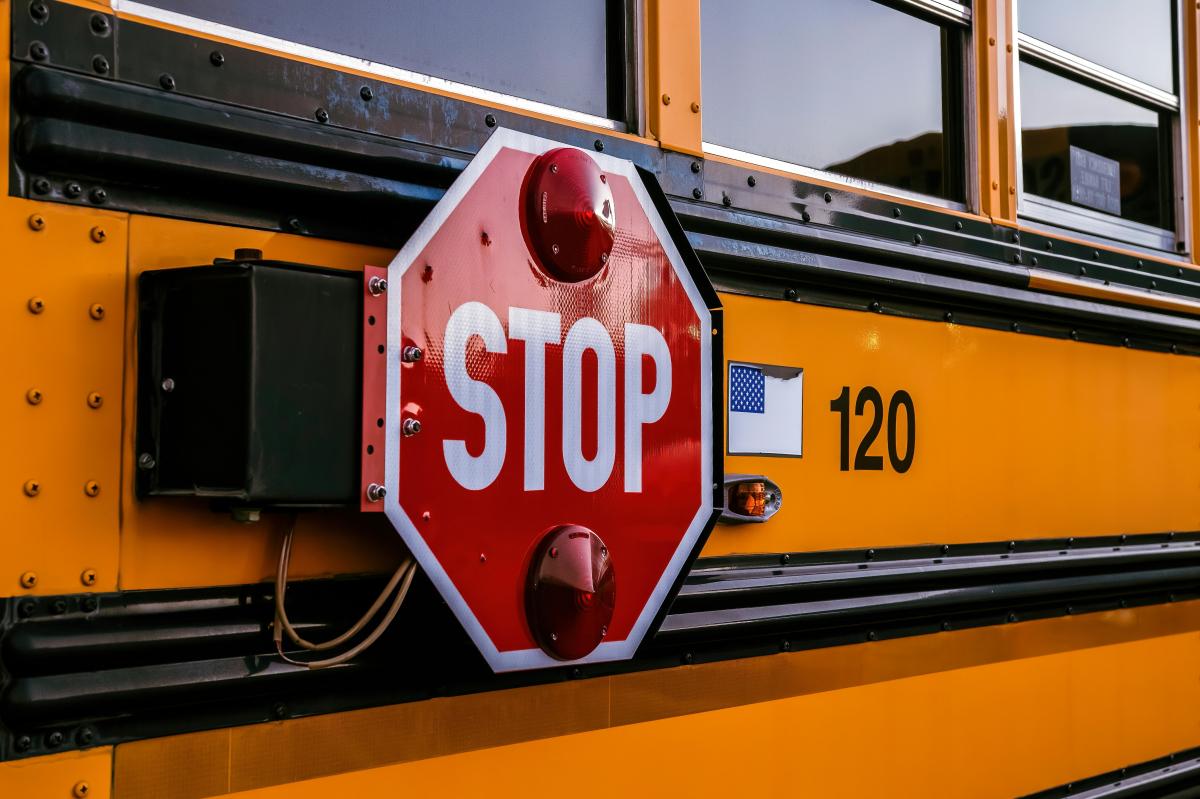Reflecting on Summer Safety Protocols
As the warmth of summer recedes, it's essential to reflect on the various safety measures practiced during the lively summer months. This season often encompassed a myriad of fun activities such as beach outings, hiking adventures, and family barbecues, all of which necessitated meticulous safety protocols to ensure a joyful yet secure experience. Travelers were consistently reminded of the significance of staying hydrated, applying sunscreen, and observing social distancing guidelines due to the ongoing health concerns. Moreover, the conscientious use of hand sanitizers and masks during public exposures became a habitual practice for many.
In addition to health precautions, outdoor events demanded regular reiterations of basic safety rules like wearing life vests during water sports and staying within designated trails while hiking. These measures not only safeguarded individuals from potential accidents but also facilitated a wholesome enjoyment of nature's bounty during summer. To further enhance safety, families meticulously planned their travels, prioritizing places with proven records of effective safety practices, thereby adding an extra layer of security to their adventures.
While reflecting on these protocols, it becomes evident that some strategies were more effective than others. The widespread adoption of personal protective equipment (PPE) significantly curtailed health risks, solidifying its importance in day-to-day interactions. On the other hand, strict adherence to travel advisories often presented logistic challenges, highlighting areas for improvement. These variances suggest that while several strategies worked exceptionally well, some will require tweaking to suit different contexts, especially as we transition into the academic year.
As we stand on the cusp of a new school year, learning from the summer's health and safety measures becomes imperative. Recognizing the importance of these insights paves the way for developing robust protocols, ensuring a smooth and secure adaptation. This proactive approach not only underlines our commitment to safety but also equips us to handle the new academic season with enhanced preparedness and confidence.
Transitioning from Relaxed Summer Days to Structured School Routines
As summer draws to a close, the transition from relaxed, unstructured days to a more regimented school routine becomes imperative. This shift is not merely about changing schedules but also about promoting a safer and more predictable environment for children. A key component of this transition is establishing and maintaining consistent routines which support not only academic success but also overall well-being and safety.
One of the first steps in fostering a structured school routine is to develop a consistent sleep schedule. Research indicates that regular sleep patterns help improve cognitive functions, emotional regulation, and alertness, all of which are crucial for school performance and safety. A well-rested child is less likely to suffer from daytime drowsiness and distraction, reducing the risk of accidents and enhancing their ability to focus and participate effectively in school activities.
Meal planning also plays a significant role in ensuring a smooth transition to school. Nutritious, well-timed meals can provide the energy and focus needed for a productive day. In addition, regular meal schedules can help children maintain steady blood sugar levels, which is essential for sustaining concentration and mood stability. Encouraging children to take part in meal preparations can also instill a sense of responsibility and awareness of healthy eating habits.
Furthermore, incorporating structured after-school activities can enhance the overall routine. Activities such as sports, arts, music, or any other club involvement can offer a sense of purpose and belonging, which in turn contributes to mental and emotional well-being. Such engagements not only keep children physically active but also provide a safe environment for learning and personal growth.
The mental and physical benefits of a structured routine are manifold. Consistency and predictability can reduce anxiety and stress, foster better time management skills, and enhance a child’s sense of security. Establishing clear expectations and regular routines helps children to thrive in a safe and supportive environment, setting a solid foundation for their overall development and safety throughout the school year.
Updated Health and Safety Guidelines for the School Year
As summer draws to a close and students gear up for the new school year, understanding the updated health and safety guidelines is crucial for ensuring a secure and productive environment. Schools have rolled out refined protocols to adapt to the evolving situation, with a strong emphasis on mitigating the spread of COVID-19, enhancing general hygiene practices, and staying compliant with new regulations.
A significant aspect of the updated guidelines pertains to COVID-19 protocols. Schools are enforcing regular health screenings, which may include temperature checks and symptom questionnaires to promptly identify potential cases. Mask mandates are determined based on local health authority recommendations, with some institutions requiring face coverings in indoor settings regardless of vaccination status. Physical distancing measures, albeit slightly relaxed, remain pertinent, particularly in areas of high transmission.
To maintain robust hygiene standards, schools emphasize frequent handwashing, supported by the installation of additional hand sanitizing stations. Classrooms and common areas are subject to enhanced cleaning regimens, employing EPA-approved disinfectants to minimize infection risks. Ventilation systems have undergone upgrades to ensure the circulation of fresh air, thereby reducing airborne pathogens.
Moreover, new regulations include updated vaccination policies. Some districts now mandate vaccinations for eligible students and staff, aligning with public health directives to bolster immunity within the school community. Exemptions are considered on a case-by-case basis, often requiring documentation and adherence to alternative safety measures such as regular testing.
Staying informed about these guidelines is pivotal. Parents, students, and educators are encouraged to consult school websites and communication channels regularly. Subscribing to newsletters and following official social media accounts can provide timely updates. Ensuring compliance involves understanding these guidelines and implementing them consistently, fostering a safe and healthy learning environment.
By prioritizing health and safety, schools aim to create a conducive atmosphere for education while safeguarding the well-being of their communities. Familiarizing oneself with these updated guidelines and integrating them into daily routines is a proactive step towards a successful and secure school year.
Back-to-School Travel Safety Tips
With the new school year commencing, it is crucial to reassess and prioritize back-to-school travel safety. Students and parents alike should adopt comprehensive safety measures for all modes of commuting, whether that be walking, biking, carpooling, or using public transit. Ensuring safety in these daily routines can minimize accidents and enhance overall well-being.
For students walking to school, visibility is key. Equipping children with bright, reflective clothing and sturdy footwear can significantly increase safety. Additionally, parents should practice walking the route with their children before the school year starts, reinforcing the importance of crosswalks and teaching them to make eye contact with drivers before crossing streets.
Cycling offers another popular mode of transportation. Helmets are a non-negotiable staple of biking safety, as they protect against potential head injuries. It is also important to ensure that bicycles are in proper working condition, with functioning brakes and lights. Riding on the right side of the road, in the direction of traffic, and using hand signals when turning or stopping are essential practices to instill in young cyclists.
Carpooling can minimize traffic congestion and offer a safer commuting alternative. Drivers should be vigilant in enforcing the use of seat belts for all passengers, as well as keeping distractions to a minimum. Carpool lanes and drop-off zones can be particularly crowded, so it is wise to plan these commutes to avoid peak times and reduce potential hazards in school zones.
For those utilizing public transit, masks should be worn to curb the spread of illnesses. Preparing exact fares or transit cards in advance can prevent unnecessary delays. Students should wait for the bus or train at designated stops, maintaining a safe distance from the curb, and always board or exit the vehicle in an orderly fashion.
Ultimately, navigation through busy school zones necessitates a heightened awareness of surroundings. Adhering to posted speed limits and being cognizant of crossing guards, buses, and the influx of students on foot or bikes ensures a safer environment for everyone. By embracing these back-to-school travel safety tips, we can foster a secure and productive start to the academic year.```html
Creating a Safe Learning Environment at Home
As summer fades and a new school year begins, ensuring a safe and productive learning environment at home becomes paramount, particularly for those engaged in hybrid or virtual learning models. Establishing a dedicated study area that minimizes distractions and hazards can significantly enhance a child's focus and overall educational experience.
Firstly, select a quiet, well-lit area for the study space. Adequate lighting not only reduces eye strain but also creates a more conducive environment for concentration. Additionally, the study area should be free from physical hazards such as loose wires or clutter that may cause trips and falls.
Managing screen time is another crucial aspect of maintaining safety and productivity in a home learning environment. Extended periods in front of screens can lead to eye strain, headaches, and other health issues. Encourage regular breaks using techniques such as the 20-20-20 rule: every 20 minutes, take a 20-second break and look at something 20 feet away. Ergonomic setups, including appropriate chair and desk heights, can prevent common physical discomforts associated with prolonged screen use.
Additionally, fostering a supportive atmosphere for learning is essential. Create a schedule that balances study time with recreational activities to prevent burnout and maintain motivation. Open communication channels between parents and children can help address any challenges that arise and provide necessary support. Consider implementing family discussions to review the day's progress and set goals, reinforcing a culture of mutual support and encouragement.
Furthermore, internet safety should not be overlooked. Educate children about the importance of personal information confidentiality and establish guidelines for safe online behavior. Parental control software can also assist in monitoring and restricting access to inappropriate content, ensuring a secure digital learning environment.
By thoughtfully setting up a safe and efficient learning space at home, managing screen time effectively, fostering a supportive atmosphere, and emphasizing internet safety, parents can significantly enhance their children's educational experience as they navigate the complexities of hybrid or virtual learning.
Mental Health and Social Well-being in a New School Year
As the summer season ends and the new school year begins, the transition back to an academic environment can be a significant period of change for students. This transition often brings with it a variety of anxieties and stressors related to resuming daily routines, academic pressures, and social integration. Consequently, the mental health and social well-being of students become critical areas to focus on.
The return to school can provoke feelings of apprehension for many students. They may worry about academic performance, fitting into social groups, or adapting to new teachers and classrooms. These concerns are normal yet, if unaddressed, can contribute to mental health issues such as anxiety and depression. Therefore, recognizing the signs of mental distress early is vital. Symptoms can include persistent sadness, irritability, withdrawal from social activities, and changes in sleeping or eating habits.
Parents and educators play pivotal roles in supporting students through these transitions. Open communication is essential. Encouraging students to express their feelings and concerns can provide the emotional outlet they need. Creating a supportive environment where students feel heard and validated can significantly mitigate the impact of stressors. Moreover, parents should collaborate with teachers to stay informed about any changes in behavior that might indicate distress.
In addition, schools can implement programs that promote mental health awareness and provide resources for students who may be struggling. Counseling services, mental health workshops, and peer support groups can offer invaluable support. Fostering a culture of empathy and understanding within the school community can help students navigate their emotions and social challenges more effectively.
Enhancing the mental well-being of students as they adjust to a new school year requires a collective effort. By prioritizing open communication, early intervention, and community support, we can ensure that students not only achieve academic success but also thrive emotionally and socially.
Safety in Extracurricular Activities and Sports
As the new school year begins, the safety focus must expand beyond the classroom to extracurricular activities and sports. The inherent physical nature of sports and various extracurricular activities demands precise safety protocols to mitigate risks effectively. Ensuring the proper use of equipment is foundational to this cause. Whether it's helmets for football, shin guards for soccer, or harnesses for rock climbing, the correct equipment, used properly, can prevent many injuries.
Adherence to established rules is another crucial aspect of safety in physical activities. Rules are in place not just to maintain order, but to protect participants from preventable injuries. Coaches and instructors must ensure that all athletes understand and follow these rules diligently. Regularly scheduled training sessions on rule comprehension can significantly reduce the likelihood of accidents caused by misunderstandings or lapses in judgment.
Proper hydration and nutrition stand as pillars of athletic performance and safety. Dehydration, heat exhaustion, and other nutrition-related issues can be life-threatening, especially in high-intensity sports. Encouraging and monitoring adequate fluid intake before, during, and after activities, and guiding students toward balanced diets, can maintain energy levels and reduce the risk of health complications.
The role of coaches and instructors in maintaining a safe environment cannot be overstated. They must be vigilant, knowledgeable, and proactive in both anticipating and addressing possible safety concerns. This includes regular safety drills, first aid training, and ensuring that all equipment is in good condition. Continuous communication with participants about safety measures helps build a culture of trust and vigilance.
Ultimately, the comprehensive safety of students in extracurricular activities and sports relies on a multi-faceted approach. By integrating proper equipment usage, rules adherence, adequate hydration and nutrition, and the critical oversight of trained coaches and instructors, we can foster a safe and supportive environment that allows students to thrive both academically and physically.
Building a Community-Centric Approach to School Safety
As the new school year begins, it is crucial to adopt a community-centric approach to safety. This involves a collective effort from parents, teachers, administrators, and students to create a secure and peaceful learning environment. Effective school safety is not the sole responsibility of school staff; instead, it requires a united commitment from the entire community.
Parents play a pivotal role in this regard. They can foster a culture of vigilance and proactive behavior at home by discussing safety protocols with their children and encouraging open communication about any concerns. Additionally, parents can participate in safety committees or volunteer for school safety programs, offering valuable perspectives and support.
Teachers, on the other hand, are on the front lines of daily school activities. They need to be well-versed in emergency procedures and act as role models for students. Conducting regular safety drills and incorporating safety education into their curriculum can help students understand the importance of staying alert and how to respond in various scenarios.
Administrators must ensure that comprehensive safety plans are in place and regularly updated. This includes conducting risk assessments, coordinating with local law enforcement, and investing in necessary security infrastructure. Administrators should also facilitate continuous training for staff and foster an environment where safety is a priority.
Students also have a crucial role in maintaining a safe school environment. Encouraging students to speak up about safety concerns, participate in peer-led safety programs, and respecting established safety rules can significantly enhance the overall security of the school. Peer influence is often strong, and students can help promote a culture of mutual respect and attentiveness.
Creating a culture of safety requires ongoing collaboration. Establishing regular open forums for discussion among all community members can provide an avenue for addressing emerging issues and brainstorming solutions. These forums can serve as a platform for continuous improvement, ensuring that safety measures are adaptive and responsive to new challenges.
In conclusion, a community-centric approach to school safety emphasizes the combined effort and shared responsibilities of parents, teachers, administrators, and students. By working together, we can cultivate a culture of vigilance, collaboration, and resilience, ensuring that our schools remain safe and supportive environments for learning and growth.







